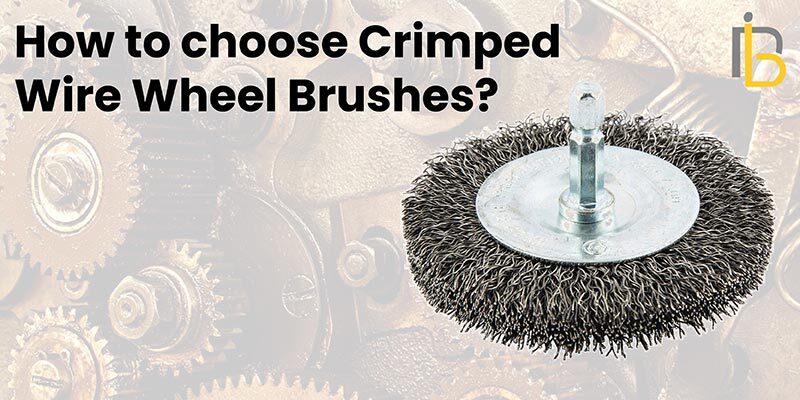Before getting to know how to choose Crimped Wire Wheel Brushes for your various needs, let us first know what Crimped Wire Wheel Brushes are.
What are Crimped Wire Wheel Brushes?
Crimped wire wheel brushes exhibit filaments of twisted, wavy, or pinched stainless steel, carbon steel, or brass. Filaments of wavy, twisted, or pinched carbon steel, stainless steel, or brass are seen on crimped wire wheel brushes. Crimping distinguishes these metal filaments from each other and helps to reduce the wire rigidity and wire breakage caused by flexing, turning, and moving. Crimped wheels made from oil-tempered wire will cost more but typically last longer. During the regular use of the wheel knife, small bits of wire falls off, leaving fresh cutting edges exposed. These crimps help in making breaks cleaner.
Many crimped wire wheels have a 2 “arbor hole that allows 1/2” or 1 “shafts to be used. Such wire wheel brushes are available in a variety of sizes, but 6 to 8 inches are the most common diameters. The base material of the component or workpiece dictates which type of filament to choose, and a feature of the finishing specifications is the filament or wire size. Another essential to remember is the dista mask, so producers can choose to be short, medium, broad, or extra-large. Narrower brush faces are appropriate for corners, uneven textures, and crevices. The brush’s wider faces provide continuous brushing over broader regions.
How to choose Crimped Wire Wheel Brushes?
When attempting to remove rust and oxidation, paint, slag, weld spatter and other unnecessary surface pollutants without removing any base material, wire brushes are the perfect option. But how do you pick the right wire brush for the job with so many choices available? When selecting a wire brush, let’s discuss the four key factors to consider:
1. Diameter of the wire
A good thumb rule to follow is to select very fine to the fine wire for medium to the coarse wire for heavy-duty jobs as well as for light-duty jobs.
2. Type of Wire
Crimped Wire Wheel Brushes are available in stainless steel, carbon steel, brass, and nylon. Brass and nylon are relatively lightweight and can be used on most workpieces, whereas carbon steel and stainless steel are better combined with particular types of material. Choosing the correct one is as simple as choosing the right form of wire to match the material for the workpiece.
3. The Filament configuration
In Crimped Wire Wheel Brushes individual filaments are supported only by each other by creating extra flexibility. These brushes are ideal for working on finer surface finishing, irregular surfaces, and light- to medium-duty contaminant removal.
4. The trim length
The length of the trim is equal to the amount of useful filament on your wire brush. These best practices can come in handy in choosing the right trim length.
Irregular surface – pick longer trim lengths for greater versatility
Several applications – for quicker intervention, choose shorter, more rigid trim lengths
These are the four factors to be considered while choosing Crimped Wire Wheel Brushes. Hope this article helps you in choosing the best brushes that suit your applications.

